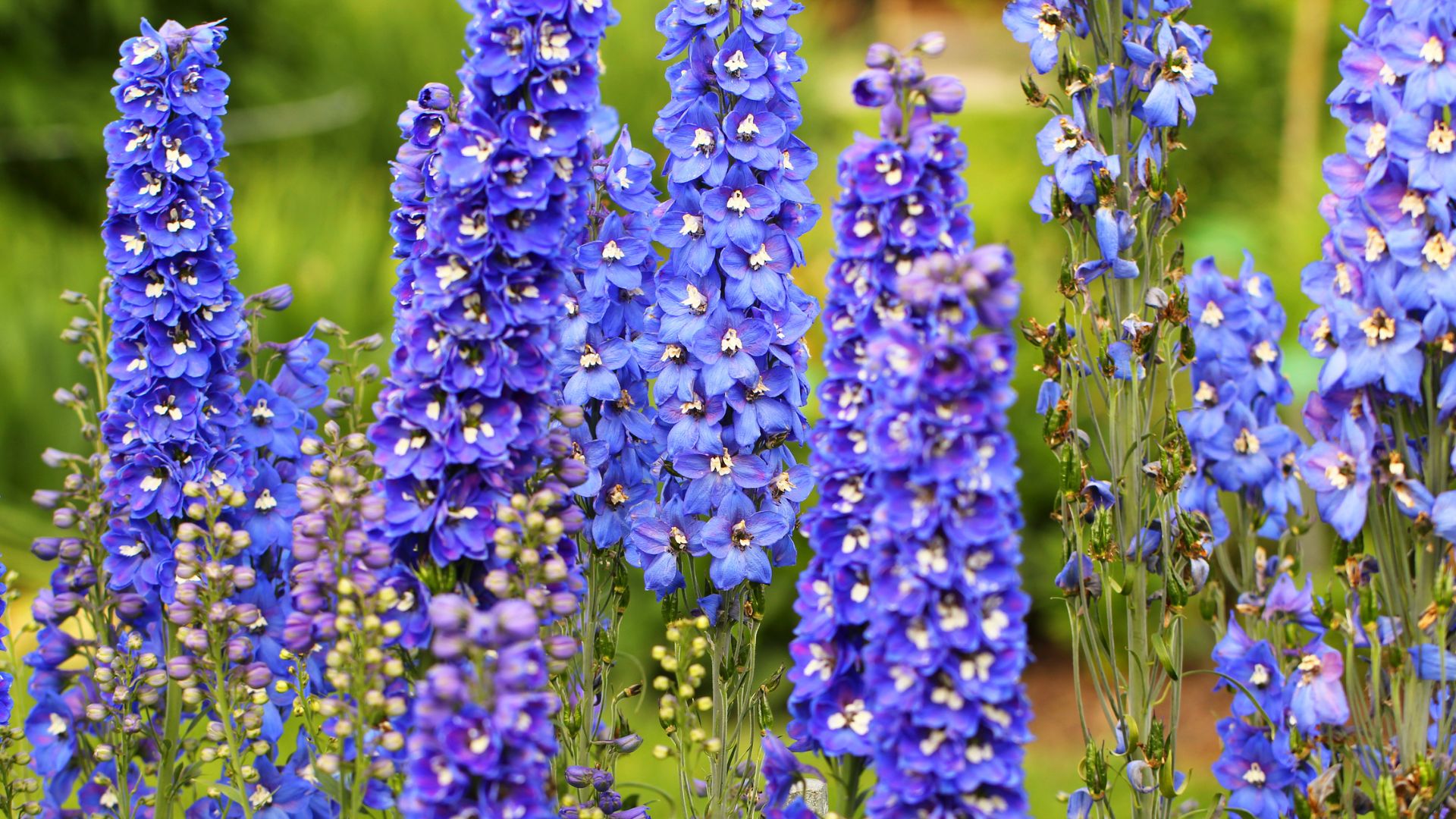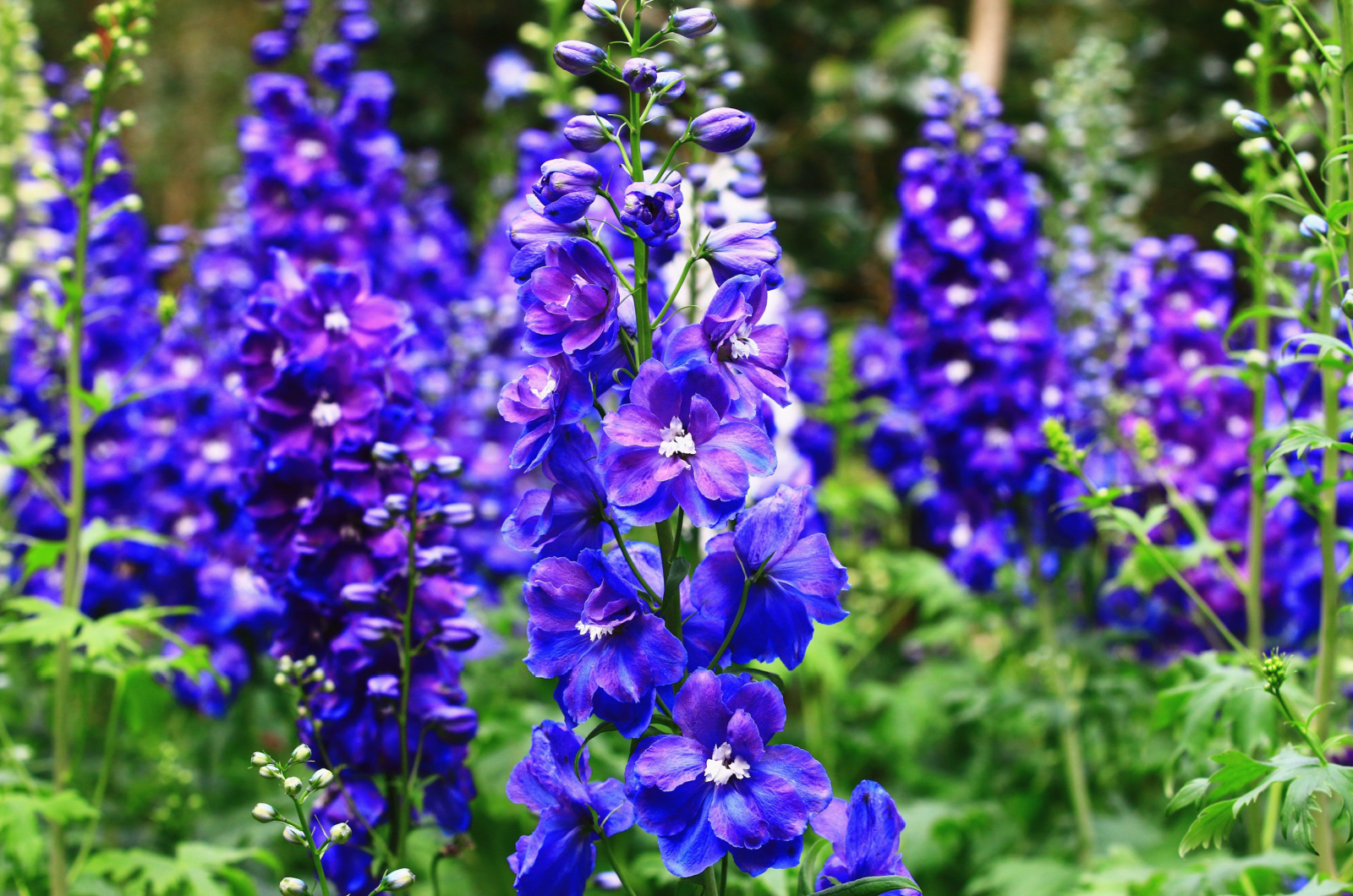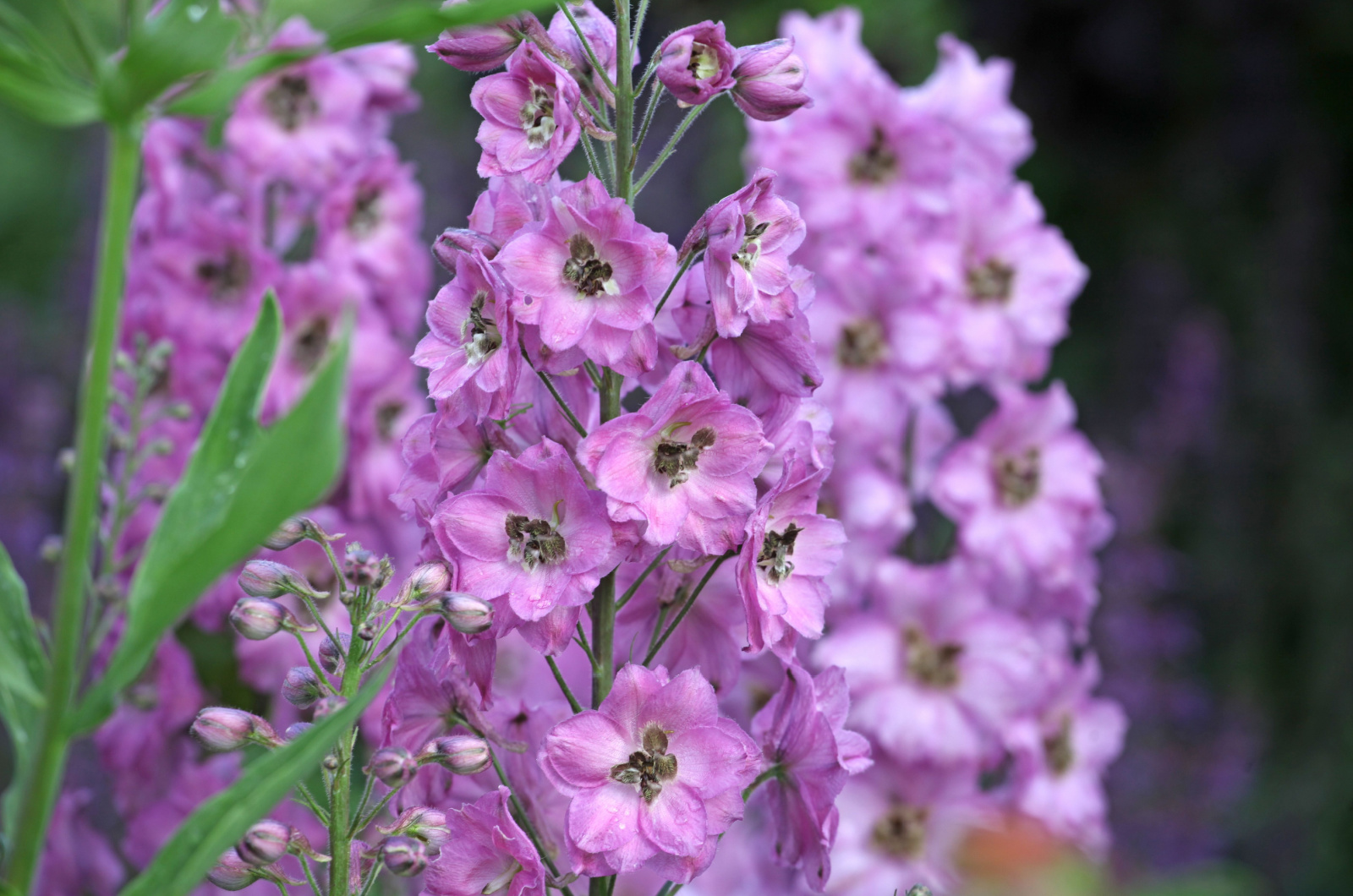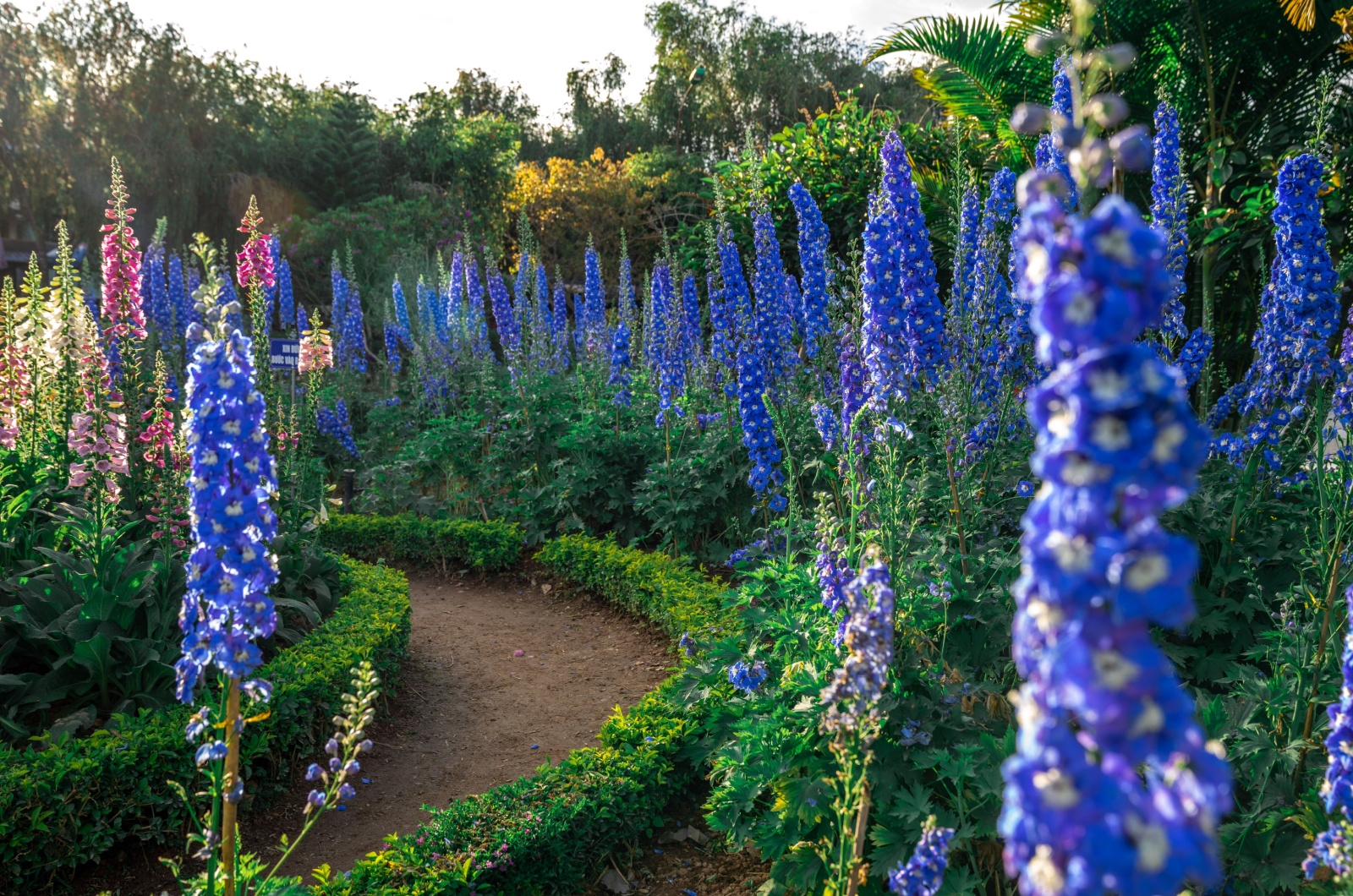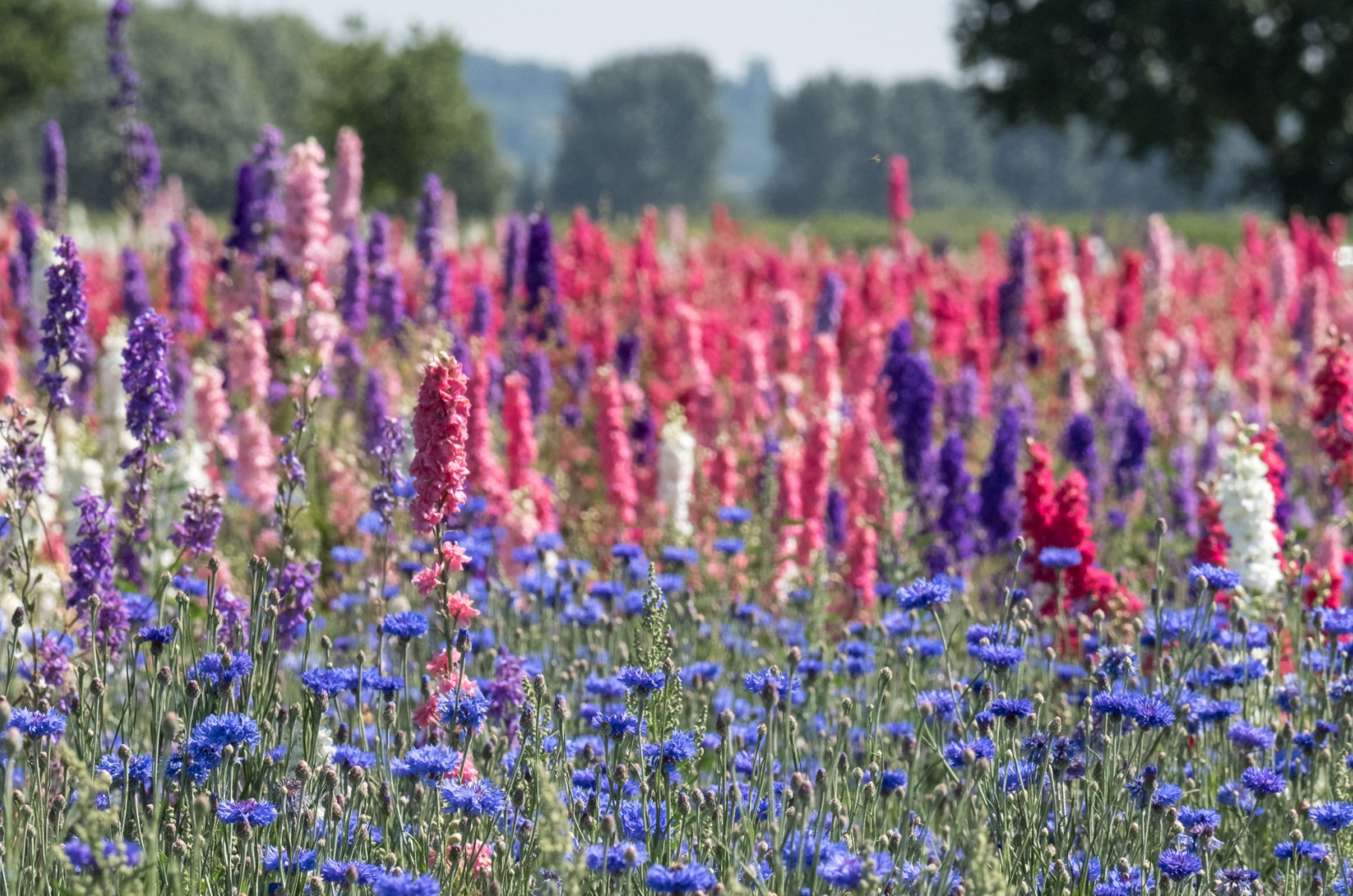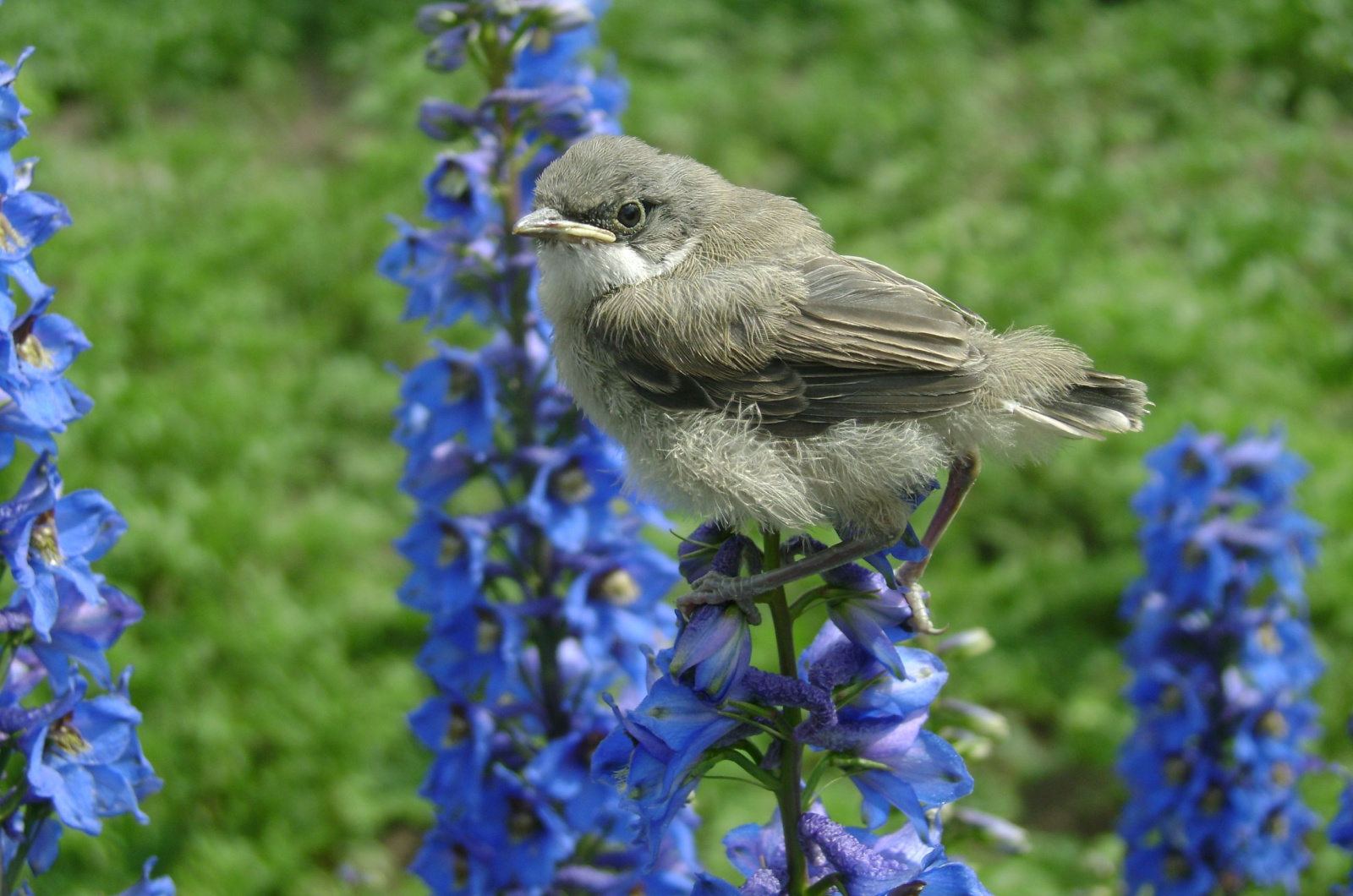One of the staples of English cottage style gardens are colorful delphiniums. But don’t worry! These rattle-snake-tail look-alikes won’t hurt you, but shower your perennial beds with gorgeous flowers and countless pollinators.
Growing them is pretty easy, but one thing is a surefire way to have them coming back year after year looking more beautiful than ever.
What am I talking about? Pruning!
And if you do it correctly, you’ll be able to enjoy a second flush of flowers later in the season, giving your garden a last pop before the winter.
Let’s get started!
The 3 Phases Of Cutting Back Delphiniums
These three main pruning stages are a foolproof way of growing gorgeous delphiniums, prolonging their flowering season, and having them thriving year after year.
1. Initial Cut
Before you can prune your delphiniums for the first time, it is important to nurture them a bit. Transplant them at a good spacing to promote air circulation because these plants cannot tolerate high humidity.
Then add a layer of organic mulch to suppress weeds and reduce water loss from the soil through evaporation.
When your plant is just a couple of inches tall, remove all the shoots except the three strongest and healthiest ones.
And if you have older plants, you can remove the main stem to encourage side shoots to bloom all summer. Also, thinning these older delphiniums to about 5-7 stems isn’t a bad idea.
This method will encourage your plant to produce only a couple of flower stalks, and it will shower them with more abundant blossoms.
If you have taller varieties, stake the shoots at this stage to prevent them from breaking and continue tying them to the trellis until they reach mature height.
And don’t forget to water them regularly, especially during summer.
2. Encouraging Reblooming
Delphiniums usually bloom around early to midsummer, but you can encourage a second flush of flowers in late summer or early fall by deadheading the spent blossoms.
Just cut the flower spikes at about 2 inches from the ground and it will induce your plant to rebloom.
And the best part is that this practice is the same for dwarf, compact, or tall delphiniums, whether you grow them in containers or the ground.
Pro tip: After pruning, fertilize your delphiniums with bloom booster or a potassium fertilizer to encourage high quality flowers.
3. The Last Prune
Unlike coneflowers, which can look quite interesting when dusted with snow, delphiniums tend to collapse under the weight. This may look unattractive, so it’s best to cut back delphiniums before winter.
Once the stems are wilted and brown after the second blooming, it is time to prune them at about 2-3 inches above the ground.
This will prevent diseases and pests from overwintering in the stems and foliage and springing back to life as the warm weather approaches.
After such heavy pruning, it is good to mulch the delphiniums to insulate the soil and keep the roots warm enough to survive the winter cold.
These plants will perk back up in spring when you can apply some all-purpose fertilizer to boost their growth and help them prepare for the upcoming flowering season.
Pro tip: remember to use clean pruners when trimming delphiniums and sterilize them afterwards so that you don’t transfer bacteria or fungi onto your plants.
Tips For Growing Delphiniums
Delphiniums are gorgeous, there’s no doubt about that, but before you rush to your nearest nursery, take a look at their growing requirements because they can be fussy.
You can find this beauty on the list of pink perennial flowers, although it comes in an array of colors, including blue, white, red, and violet. That’s why it’s popular among gardeners around the world.
However, make sure that your garden conditions are suitable for these plants before purchasing them.
Generally speaking, delphiniums thrive in USDA hardiness zones 3-7 and are perfect for northern parts of the US. They cannot tolerate the heat and humidity of the south.
They thrive in nutrient-rich and well-draining substrates. Delphiniums enjoy consistent moisture, but hate soggy soils, so make sure your drainage is good before you plant them. You can amend your garden soil with compost to make it more draining and fertile.
Delphiniums flourish in full sun, so you should find a spot in your garden that gets at least 6-8 hours of direct light per day. These flowers can tolerate some light shade during hot summer afternoons, and it would be perfect if your location could cover this as well.
But don’t despair if you don’t have these exact conditions in your garden. There are newer hybrids that can handle hotter conditions. Or you can always grow them as annuals or choose annual cultivars and grow them in the south.
There are many varieties you can choose from. Taller delphiniums such as ‘Black Knight,’ ‘Percival,’ ‘Sungleam,’ or ‘Sunny Skies’ can get up to 6 feet tall and are ideal for sheltered gardens. Strong and harsh winds can break their stems, so it would be best to stake them as well.
Or you can choose more compact varieties such as ‘Light Blue White Bee’ or ‘Summer Cloud.’
Just remember that all delphiniums are toxic, so keep your children and pets away from them.
Leaving More Stems On Tall Delphiniums
If you have tall delphiniums, you don’t have to prune them down to only about 5-7 shoots. You can certainly leave more, but know that this may result in having shorter plants.
It may also reduce air circulation and increase the risk of powdery mildew and similar fungal diseases, but you can try it on one plant and see where it takes you.
Why Are My Delphiniums Gone This Year?
Sometimes slugs and snails can nibble on your delphiniums in spring and wreak havoc in your perennial garden. Luckily, there’s a kitchen ingredient that will control slugs and snails – vinegar.
Or you can opt for other methods, such as using beer traps, pellets, some biological control, or even removing them by hand.
However, these nuisances aren’t the only reason why your delphiniums might be gone. Perhaps they’ve just come to the end of their life since they are short-lived perennials that last only 2-3 years, sometimes 4.
However, you can rejuvenate them by dividing them every couple of years to prolong their life span.

